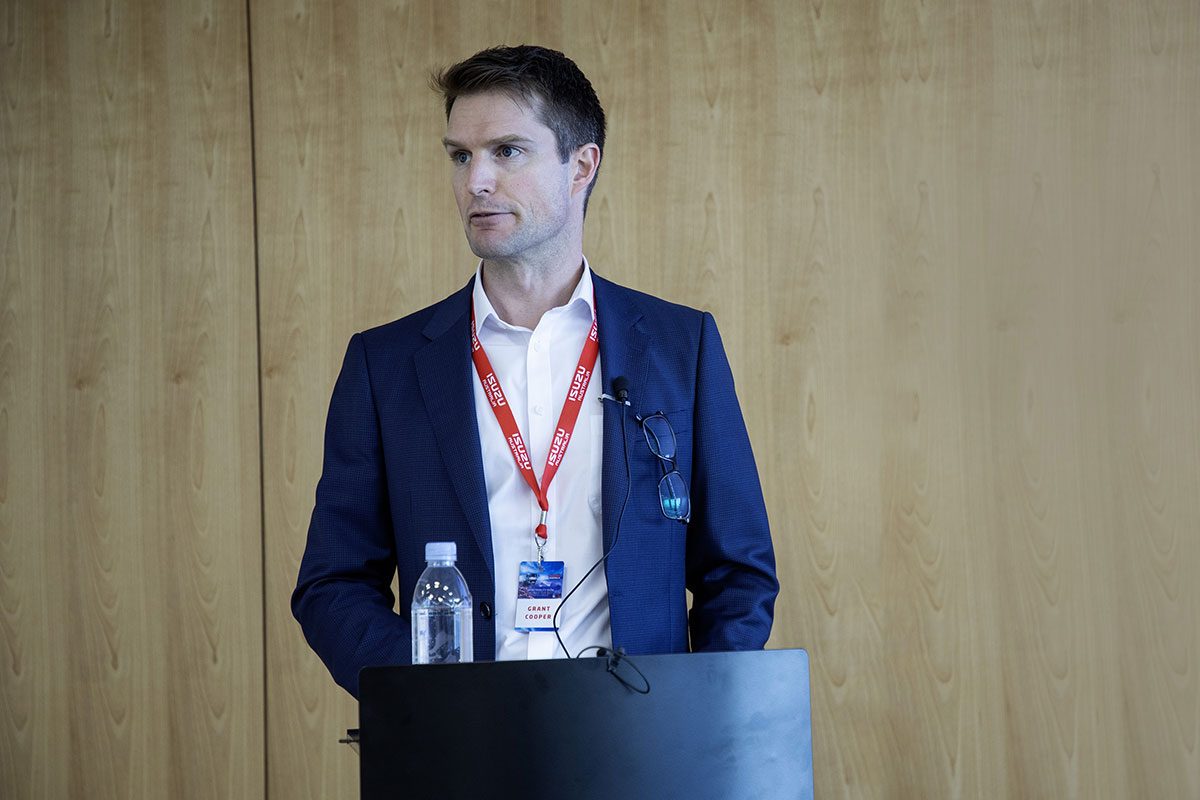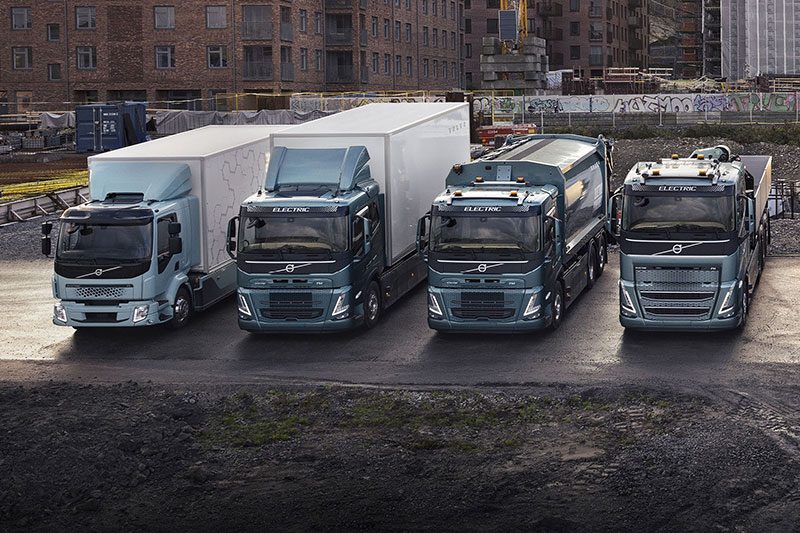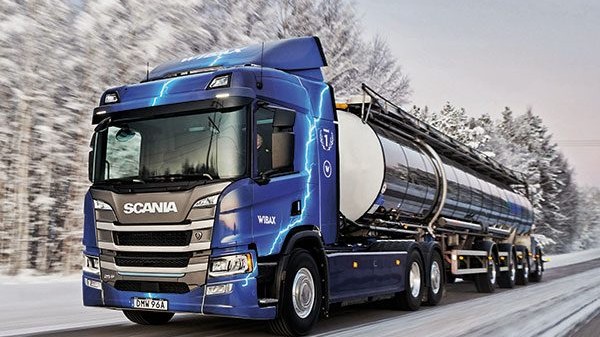
We catch up with Scania’s president and CEO Christian Levin who, last September, also took on the role of CEO of Traton SE.
CONGRATULATIONS ON THE NEW JOB. WHAT DOES THIS MEAN FOR SCANIA?
I think with me having this double role now, we can put Scania in the space where it belongs. I think this is really good for all the brands, actually. We’re going to see much more of a collaborative attitude.
WHEN THE WORLD IS TALKING ABOUT SUSTAINABILITY, WHY LAUNCH A NEW 13-LITRE COMBUSTION ENGINE?
If you look at the trajectory we need to take according to the Paris Agreement, we need to reduce quickly. The dilemma is that customers are not buying electric vehicles to the extent needed to make a big difference. So the most efficient thing we can do is work on 99% of the sales – if we can take out 10% fuel, that is 10% less CO2 .
We aim to reach a 20% reduction by 2030, and the CO2 emission legislation in the EU tells us to cut 15% by 2025. The best and fastest measures are to improve the old combustion engine. And we can do it – there’s more to get. We are peaking thermal efficiency well above 50%, which we didn’t think was possible 10 years ago.
We, as an old OEM, need to fund our investments in electro-mobility, or hydrogen, through sales of traditional vehicles. We are not a start-up; we are not Tesla. Shareholders don’t pour money on us and say ‘please develop new vehicles’. So it is a way to cut emissions and fund the transition into full-electric vehicles. I am very happy we decided to make that investment six years ago and have no problem defending it as it is also fully HVO and biodiesel compliant, and we are working on gas.

IS THIS THE LAST HURRAH FOR THE DIESEL ENGINE?
Yes, it is. It is prepared for Euro-7, China 7 and the next EPA. It is the last platform, for sure. Our R&D budgets are quickly shifting away from combustion engines and into autonomous and electrified transport.
WHAT IS TRATON GROUP’S STANCE ON HYDROGEN?
We have hydrogen heavy vehicles running on the streets right now, doing food distribution in Norway and garbage collection in Gothenburg, Sweden.
We started some years ago, and I was sponsoring that project in my previous role. There are lots of advantages [over battery electric] and our belief was that the fuel cell would be the answer.
However, one huge problem has emerged with these vehicles – energy inefficiency. When you look at it from a well-to-wheels perspective, and you start with hopefully green electricity, and take that on in a battery electric vehicle (BEV), you basically lose about 25%. So it is very efficient compared with a diesel engine, where we talk about 50%. The problem with hydrogen is you lose a lot when you go from electricity and do the catalytic conversion, and then when you go back in the fuel stack. You basically lose 75%, you run on 25% efficiency. So that means the operating cost of that vehicle is three times higher. To offset three times the fuel cost [compared with diesel], is very difficult for most customers.
We have gone into the details thoroughly and analysed segment by segment, application by application, market by market, because it depends on electricity price, and infrastructure availability. We see that battery-electric in most applications will always beat the hydrogen vehicle on cost of ownership. And that is the name of the game. Even if the electricity prices go down steeply, and the hydrogen vehicle will be less expensive than the BEV over time (which I doubt), it will still, because of the energy cost, have a big disadvantage.
Hydrogen will be suitable for around-the-clock applications, like three-driver applications or tourist coaches. But these segments come to maybe 10% of the market in Europe.
The last argument is that there is no green hydrogen available right now. The little that is produced is consumed by the chemicals industry and, when it becomes available, it will be completely absorbed by the ones who are prepared to pay much more for it, such as producers of steel.
We agree with most things in the transition to clean energy [with Volvo and Daimler] but on hydrogen, we think they are really over-optimistic. And we don’t think it is fair to tell governments around the world to invest in a hydrogen infrastructure alongside the battery-electric infrastructure. It confuses things, which makes it take more time. It would delay the building of an infrastructure, and makes the politicians believe that it is much more expensive than it actually is.
We might be wrong, they might be right, but that’s our standpoint as Traton Group. We believe BEVs will dominate and hydrogen will be a niche product. I was really an advocate of hydrogen, and now I am more sceptical and realistic.
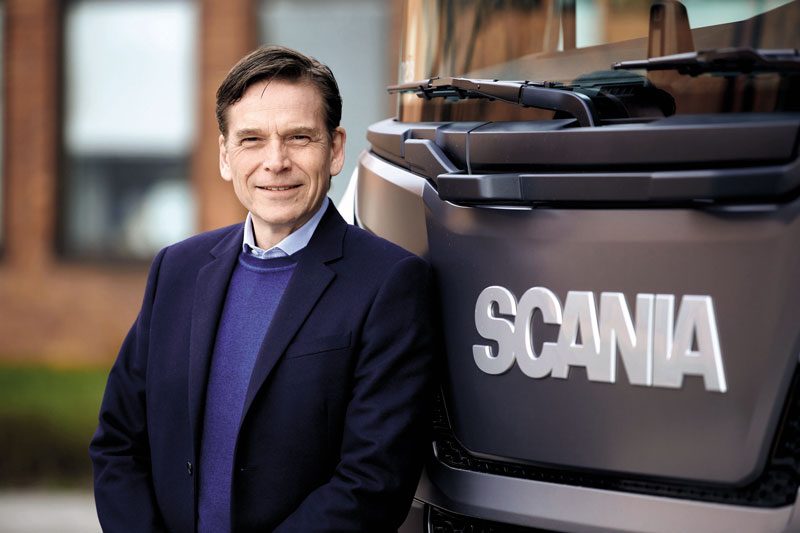
WHAT ABOUT HYDROGEN COMBUSTION ENGINES?
Burning hydrogen is the least efficient way to propel a vehicle. You get even less energy efficiency than running it through a fuel cell. So when I do a comparison of all the future technologies to propel a vehicle, the last one is to burn hydrogen. Of course, we are testing that, too. You can make very clean engines, but they would be very inefficient.
WHEN WILL WE SEE A PRICE PARITY BETWEEN ELECTRIC AND DIESEL?
It depends on the segment you are operating in, and it depends on the incentives going into that market. In many cities, we already see a cost parity with city buses, because there are huge incentives given to bus operators if they choose electric.
In the long-haul segment, it is going to be years away. Based on guesswork on fuel prices, fuel taxation, electricity availability, electricity cost and taxation, electricity consumption of future vehicles, battery cost of future vehicles – all packaged into a model – we see parity in 2025 to 2030.
And then you have inner-city distribution, multi-stop, where it could happen in two years, perhaps. Or maybe even next year. Politicians can change this very quickly by deciding the price of carbon or introducing an energy taxation that favours non-fossil. That will happen market by market. But that will change the equation, and make things move faster. Against this, there will always be the scepticism of the traditional haulier, who will ask ‘where can I charge?’, ‘is the vehicle reliable?’, ‘what is the life length of the battery?’, ‘after five years will there be a residual value, or will it be scrap?’
So even if there is cost parity, in theory, that doesn’t mean that the transition will happen immediately. That is why it is so important that we continue to supply good combustion engines that can be fuelled with HVO (Hydro-treated Vegetable Oil) and bio diesel and bio gas, which will do a good job in reducing carbon footprints all the way up to 2040.

ELECTRIC VEHICLES ARE INCREDIBLY EXPENSIVE, SO WILL THE PURCHASING MODEL CHANGE?
What will change is the length of time people keep their vehicles. Many more customers will see that they will have to amortise the vehicle down to zero, instead of keeping it for five or seven years. This is a bit like they do with gas vehicles, which have longer life cycles.
All the speculation around exchangeable batteries and battery life being short, I don’t think will materialise. What we learned with working with Northvolt, who will supply Scania with cells, is that we get very good reliability and life. They are aiming at the same 2,000,000km life actually. And if so, we won’t need to decouple the battery from the vehicle. But we are back to the old business model, where you make leasing with a buyback and there is a second life, probably.
IS IT IRRESPONSIBLE TO BE PRODUCING A 770HP V8?
I was heading up our operations in Italy for four years, which was dominated by big V8s. I soon learned that there were logical business decisions for choosing these machines. It was about gaining an hour taking livestock or fresh vegetables from the south of the country to the markets in the north, and about reliability over the Alps. They were running at lower revs as the cylinders were working at a slower pace compared with six cylinders. And, hence, not only would they get the best second-hand value, but they would have less downtime too.
Also, if you carry heavy loads, they actually consume less fuel than a small engine that has to work really hard. Of course there is also the satisfaction of the driver, which has a positive impact on the environment, because a happy driver is a good driver. So there are many reasons why V8s makes sense. And I don’t feel ashamed at all to have the most powerful one.
Yes, you could question whether it makes sense to put 770hp into a 40-tonne operation. Does that make sense? Probably not.
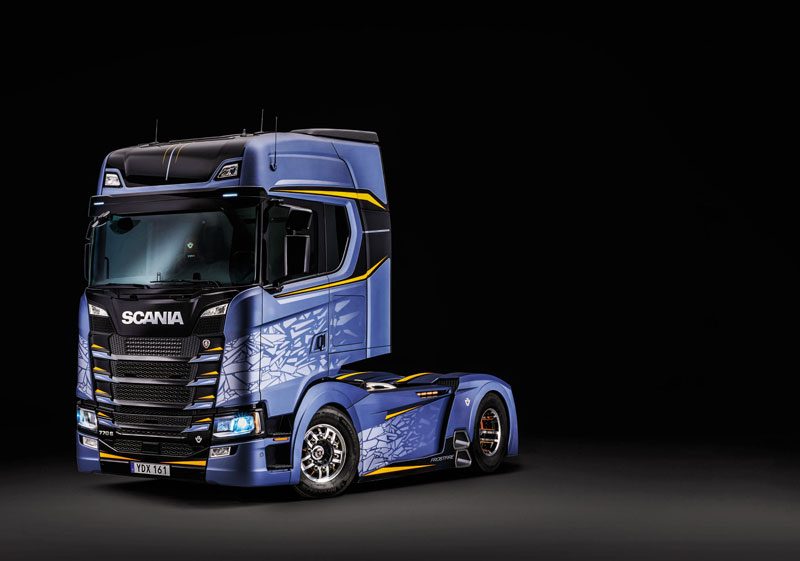
ONE DAY, THE V8 WILL HAVE TO CEASE PRODUCTION. WHAT WILL HAPPEN TO SCANIA’S IMAGE WHEN IT DOES?
Yes, the king of the road is part of our image, but the main reason why operators buy Scania is because we offer the best profit for them. Offering the best TCO makes Scania the choice of the transport company. Of course it also needs to be the choice of the driver. They will have a comfortable cabin, and the driving characteristics [of electric vehicles] and feeling of power will be Scania. We work a lot on our electric vehicles to make sure they have a super good integration of the driveline, and have the high torque and feeling of massive power.
WE HAVE SEEN A NUMBER OF NEW ELECTRIC TRUCK MANUFACTURERS ARRIVE ON THE SCENE. DOES THEIR PRESENCE CONCERN YOU?
I welcome them. I think competition is good. Why does Sweden have two of the most successful heavy-truck manufacturers in the world? Because competition is healthy.
I think it is great that Tesla is transforming the world of transport when it comes to electric cars, and the fact they are coming into trucks is really cool. We take on that fight and will give them a real match. But we should also watch them very carefully. What’s more interesting with Tesla than their battery technology is their digital technology. They are really strong with their own operative system, with over-the-air updates and possibilities to make the vehicle smarter over the years. There we have something to learn, and we are learning. But I welcome them and Nikola, and anyone else.
We are in a transition phase in our industry. We are moving away from combustion engines and into electric drivelines, and that opens up for newcomers. But of course we’re going to be here for another 130 years.
Read more
Road to Zero Isuzu styles
0 Comments6 Minutes
Ready for the harvest
0 Comments12 Minutes
VGA introduces electric
0 Comments8 Minutes
Celling’ the future
0 Comments14 Minutes


